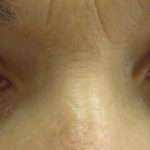An article on the names, brand names, doasage, and side effects of drugs used in the treatment of glaucoma. Intraocular pressure lowering medications.
Beta-adrenergic Blocking agents
Commonly used beta adrenergic blocking agents include Timolol (Timoptol), Betaxolol (Betoptic), and Levobunolol (Betagan).
Timolol
Timolol is a non selective beta blocker. It lowers intraocular pressure by reducing the rate of aqueous production. It is available as 0.25% and 0.5% drops and is administered
twice aday. One administration lasts between 12 and 24 hours. It usually causes marked lowering ofintraocular pressure, but this effect wanes off in some patients after a few days.
In most people, however, the lowering of intraocular is maintained for very long periods. In a few, the pressure slowly rises again. Timolol has the advantage of being effective, generally well-tolerated and long-acting, and does not affect pupillary size or visual performance.
However, timolol may cause bradycardia and systemic hypotension. It is therefore, not given to patients with slow pulse or with heart block. Bronchospasm may also occur and
may be dangerous in asthmatics.
Betaxolol
This is a B1-blocker that is almost as effective as timolol in lowering lOP and has the advantage of having little or no
effect on the cardiopulmonary system. It is thus preferable to timolol in patients with cardiac or pulmonary problems. It is used as 0.5 % drops. Betaxolol also improves the blood supply to the optic nerve head.
Miotics
Pilocarpine is the main miotic used in the treatment of glaucoma. It is administered topically as 1%, 2%, 4% or 6% drops 6-hourly. Its effect lasts for 4 to 6 hours. Concentrations above 4% do not appear to be more effective but their effect lasts longer.
Pilocarpine is now formulated in a high viscosity gel (Pilogel) which enhances the penetration of the drug and reduces the need for frequent application.
A single dose of pilogel applied at bedtime is as effective as 4% Pilocarpine drops applied 4 times a day. Pilogel may be used with or without other antiglaucoma drugs. Miotics have the advantage that they are cheap and very effective in lowering lOP.
But they are contra-indicated in
glaucoma due to anterior uveitis.
Their main disadvantages are the side-effects of miosis and the frequency of administration. The miosis tends to produce poor vision when light
intensity is low, especially at night.
Carbonic Anhydrase Inhibitors
This group of drugs are usually administered orally and reduce lOP by substantially reducing the rate of production of aqueous humour. Acetazolamide (Diamox) is the best known among them. Others are methazol-arrude (Neptazane), ethoxzolamide (Cardrase) and dichlorphenamide (Daranide).
More than 50% of patients do not tolerate these drugs even for limited periods.
Among the many side-effects are paraesthesia, electrolyte disturbances (metabolic acidosis, potassium depletion, uric acid retention), gastrointestinal disturbances (cramps, diarrhoea, anorexia), renal stones, hypersensitivity, nephropathy and decreased libido.
Carbonic anhydrase inhibitors are used in the treatment of acute phase of angle-closure glaucoma in combination with miotics and hyperosmotic agents.
They are used in open-angle glaucoma for limited periods on specific indication; in secondary glaucomas and pre-operatively in infantile glaucoma to
lower lOP and clear the cornea to allow better examination and facilitate surgery.
Osmotic Agents
By producing intravascular hyperosmolarity, osmotic agents
induce water to shift from extravascular compartments to the
intravascular compartments. As a result the ciliary body is unable to secrete aqueous against the increase osmotic gradient. Moreover, water may be absorbed from the aqueous.
Three osmotic agents are currently used – mannitol, glycerol, and urea.
These agents are usually reserved for preliminary treatment of acute angle-closure.
Newer Drugs for Topical Therapy of Glaucoma
Apraclonidine (Iopidine) 0.5%
This is an alpha-2 adrenergic against used previously prophylactically to reduce raised lOP following laser treatment of the eye. It reduces aqueous flow via alpha-adrenergic stimulation. It is now used three times daily in open angle glaucoma. Its usefulness is limited by tendency for the lOP lowering effect
to reduce with time (tacyphylaxis) and ocular allergy with chronic use.
Brimonidine tartrate (Alphagan) 0.2%
It is another alpha-2 adrenergic agonist. It appears to reduce lOP by reducing aqueous production and increasing
uveoscleral outflow. Its lOP lowering is similar to that of timolol and it has longer potency and less ocular side effects than iopidine.
Dorzolamine (Trusopt) 2%
This is the first carbonic anhydrase inhibitor to be marketed as a topical anti-glaucoma therapy. It is used three times daily and is additive to beta-blockers. Its adverse effects include bitter taste and ocular allergy.
Brinzolamide (Azopt) 1.0%
This is another carbonic anhydrase inhibitor formulated for topical use. The dosage is twice daily.
Latanoprost (Xalatan) 0.005%
It is a topical preparation of prostaglandin F2-a which lowers lOP by increasing uveascleral outflow. Its lOP lowering effect appears to be higher than that of Timolol. It is used once daily at bedtime.

Courtesy: Wikipedia
Courtesy of Principles and Practice of Surgery by BADOE
Read more on Mayoclinic





















